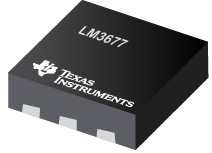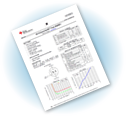Innovative automation projects for manufacturers

Some of the world’s biggest companies are coming up with technology such as automated warehousing solutions to streamline all sorts of tasks, from picking and packing to greeting visitors. In this article, Neil Ballinger, Head of EMEA at EU Automation, showcases three examples of futuristic, highly automated projects that could inspire the manufacturers of today.
Automation has long become is quickly one of the hottest topics in manufacturing, and it’s not hard to see why. From simplifying production to optimising processing chains, smart technologies are disrupting standard production and distribution strategies. Here are a few examples of technologies from the biggest names in the industry and their potential for manufacturers.
Factory in a box
A Factory In A Box (FIAB) is a new project developed by the experts at the Manufacturing Technology Centre to demonstrate the benefits of adopting smart manufacturing processes and technologies. The solution is a rapidly deployable, remotely-managed, modular manufacturing supply chain network enabled by the latest digital technologies.
It deploys smart miniature factories in the size of a shipping container in a quick and flexible manner and can be rapidly scaled. It is also fully digital and can be linked to a central control centre with remote monitoring and predictive maintenance capabilities.
This new project is ideal for manufacturers in the supply chain and logistic industry who want to maximise revenue streams from new technologies and build local capacity while commercialising unique and innovative products.
Autonomous Indoor Vehicles
If the goal of manufacturers is to optimise their processes while making a technological statement, they should probably follow Tesla’s model. In its gigafactories, Tesla is using an impressive fleet of robots, including Autonomous Indoor Vehicles (AIVs), that do everything from welcoming guests to the factory to moving components. The self-navigating machines are able to freely work around the factory and avoid humans and other obstacles using detecting sensors.
What is even more impressive about these robotic wonders is that they - like Tesla vehicles - are self-charging. Not only that, but they can guide themselves to the charging stations without human help and can function for up to 19 hours.
While not all manufacturers can afford using AIVs for their entire production line, they can invest in a few for more crucial applications. There are certainly many benefits manufacturers should consider, such as the machines’ incredible ability to work in harmony with humans, but also to execute tasks fully autonomously.
Order Picking Machinery
Logistics and automotive and not the only heavily automated industries - the food and grocery sectors are starting to digitalise as well. From Ocado’s grid solution to Walmart’s robotic fulfilment system, the food industry is reaping the benefits of automation.
An innovative project comes from Meijer, the American super store, which uses high-tech systems to automate repetitive jobs like picking and sorting food. At their fully automated warehouse, the company is using an Order Picking Machinery (OPM) which picks and packs items that arrive at the warehouse from distributors, and then stacks them onto plastic pallets alongside other products to be transported to Meijer stores.
This automation solution makes the whole process, from picking to retail distribution, faster and fault-free.
While we can’t know exactly how the factory of the future will look like, it will most likely contain at least some of these technologies. These smart solutions have the potential to radically change manufacturing towards a more digitalised and efficient future. And although it’s difficult to keep up with every advancement in the industry, at EU Automation we make it easier for manufacturers with our Knowledge Hub section.
Similar articles
More from EU Automation
- Is it time to scale up? 30th June 2021
- Innovative automation projects for manufacturers 1st June 2021
- The future of HR in manufacturing 20th May 2021
- The Help to Grow scheme - what does it mean for manufacturing? 30th March 2021












Write a comment
No comments